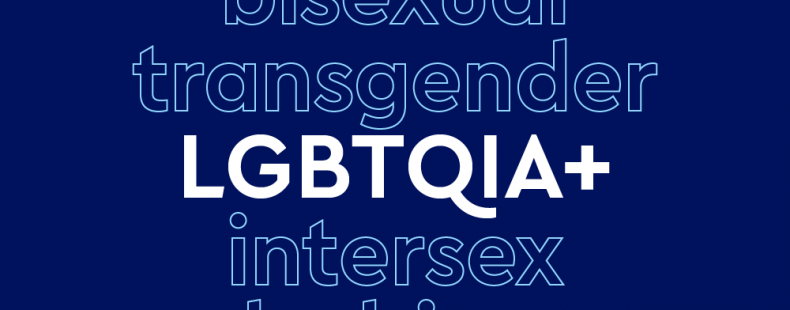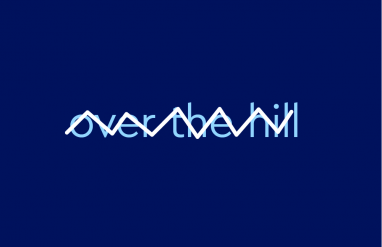by Min Straussman
June is Pride Month in the United States and around the world. Pride, formerly known as Gay Pride, is a recognition of LGBTQ identity, affirmation of equal rights, and celebration of visibility, dignity, and diversity in the LGBTQ community. During Pride Month, communities hold marches and other events to raise awareness about LGBTQ issues such as transphobia (anti-transgender) and workplace discrimination.
Pride Month is also an excellent time to renew and improve understanding of terminology around LGBTQ identity and advocacy. After all, the language used to talk about LGBTQ people and issues is constantly changing. In this article, we will cover some of these changes and discuss why they matter.
🔑 Key message about LBGTQ language
You should use the language that LGBTQ people ask you to use. This glossary will cover some general do’s and don’ts, but it won’t apply to every individual person in every specific situation. If someone asks you to use a different word than one we have suggested here, do that. It’s simply the respectful thing to do.
To some, using this new or unfamiliar language can seem silly, strange, or unnecessary. But our vocabulary for all kinds of things in the modern world is constantly changing. Changes to society, culture, and technology give rise to neologisms, or new words, like Bluetooth or yeet. Similarly, as the LGBTQ community changes, and the world changes around it, the vocabulary we use changes, too.
This glossary will cover some of the key terminology related to Pride, from what LGBTQ itself means to what “preferred pronouns” are. If you’ve felt confused by this panoply of vocabulary in the past, or simply want a refresher on what language is most appropriate, read on.
What does LGBTQIA+ mean?
You have likely come across the acronym (technically, initialism) LGBTQIA+ or one of its variants before. Here’s what each letter in this acronym means:
- L: Lesbian
- G: Gay
- B: Bi(sexual)
- T: Trans(gender)
- Q: Queer or Questioning (sexuality and/or gender identity)
- I: Intersex
- A: Asexual or Aromantic
- +: The plus sign symbolizes other gender or sexual identities that are not already included in the acronym, such as pansexual or gender-fluid.
In some instances, the A in this acronym is said to stand for “ally,” a term for cis, straight people who actively support LGBTQ people. However, this attribution is controversial, because the acronym is supposed to depict the LGBTQ community rather than its supporters.
We are going to go over the definition of some of these terms shortly, but first—what is going on with all the variants of this acronym? To break it down simply:
- LGBT: This short acronym is the most common one used to represent gender and sexual diversity. Sometimes the letters are rearranged, as in GLBT.
- LGBTQ: This acronym includes the Q for “Queer” to be more inclusive of a variety of gender and sexual identities, and, according to Google Trends, it has gained popularity in recent years.
- LGBTQIA+ and beyond: Depending on the community, organization, or culture, other variants of these acronyms have been adopted to best suit how the people in those communities self-identify.
- LGB: This shortened acronym is used by anti-trans activists, known pejoratively as TERFs. The T is left off in order to be deliberately exclusionary of trans people.
Why gay or lesbian and not “homosexual”?
While the word homosexual is still occasionally used in some contexts, you might have noticed that it doesn’t make an appearance in any version of the LGBTQ acronym. That’s because this word for describing same-sex or same-gender relationships has a controversial past.
As our usage note on the term states, “up until 1973, homosexuality was listed in The Diagnostic and Statistical Manual of Mental Disorders (DSM), psychiatry’s standard reference on the classification of mental illness. People aware of this former categorization feel that the term homosexual still carries a negative connotation. And many feel that this word places undue emphasis on sexual activity, or that it sounds overly clinical.” In fact, the term homosexual was deliberately rejected by early gay rights activists because, according to The New York Times, “they did not want to be identified as exclusively sexual beings.”
For these and other reasons, the term homosexual is widely considered disparaging and offensive. Instead, the terms gay and lesbian are generally preferred. Lesbian is used to describe a woman who is sexually attracted exclusively to women. Gay, on the other hand, can be used to describe a person of any gender who experiences same-sex attraction, although it is most often used to describe a man who is attracted to men. These days, the term homosexual is typically limited to medical contexts, if used at all.
Why is the term Pride used?
On June 28, 1969, the New York City police raided the Stonewall Inn, a bar frequented by gay and gender-nonconforming people (at a time when terms like LGBTQ didn’t yet exist). They attempted to arrest the gay and trans bar patrons, which started a series of protests against the police. Partially in response to Stonewall, in 1970, queer activists in New York City organized a march to Central Park with the theme “Gay Pride.” A more comprehensive history of the Stonewall Riot or the Stonewall Uprising can be found in our Pride Month explainer.
Pride means, among other things, “a becoming or dignified sense of what is due to oneself or one’s position or character.” By adopting this term, the LGBTQ+ community is asserting their right to exist freely, without shame. To learn more about the word pride and other affirming, positive words, click here. Not all activists agreed with the use of the term Pride. Trans activist Slyvia Rivera in particular advocated for the more forceful slogan “Gay power.”
Debates about what should be included under the umbrella of Pride continue, specifically around the issues of commercialization, cops, and kink. (The informal term cops is used rather than the more formal police in the debate around this issue.)
- Commercialization: This term refers to a critique that companies use Pride events as an opportunity to make money off of and market to the LGBT community, rather than support them. An expression to describe the use of LGBT language and symbols for marketing purposes is “rainbow capitalism” or “pink capitalism,” in reference to colors commonly used to represent the LGBT community. Supporters of rainbow capitalism argue that it is a method of advocating for rights and promoting cultural change.
- Cops: Some in the LGBT community feel it is inappropriate to have police at Pride given the history of Stonewall and controversies around police violence generally. Others feel that the police should be welcome at Pride to keep people safe or that cops should be allowed to attend out of uniform.
- Kink: Kink is a slang term meaning “unconventional sexual preferences or behavior.” Examples of kink include BDSM, an acronym used to refer to “sexual preferences and behaviors involving physical restraints, an unequal power relationship, or pain” and foot fetishes. Brenda Howard, credited with popularizing Pride, was a vocal advocate for the inclusion of kink at Pride as one way of allowing people to be open about all facets of their sexuality. However, some members of the LGBT community feel these events should be family-friendly and not include kink.
What does queer mean?
The term queer, like the term homosexual, has a bit of a troubled history. However, unlike homosexual, it has been widely reappropriated by the LGBTQ community as a label.
Queer literally means “strange or odd from a conventional viewpoint,” and by at least by the late 1800s, queer was deployed as a derogatory term for an effeminate or gay man. But, beginning in the 1980s, a movement began to reclaim the term queer as a slur and adopt it as a positive descriptor of members of the LGBTQ community. In 1990, this effort focused on queer as a collective term for gay and lesbian people. Queer was seen as a way to refer to gays and lesbians without being gender-essentialist or causing divisions within the community.
Today, the word queer has become widely adopted term used to refer to members of the LGBTQ+ community in general and collectively—with the usual caveat that not everyone feels comfortable with the term. Queer in this sense has become so mainstream it is even featured in the name of popular media products, like the Netflix show Queer Eye.
What are terms to describe gender?
The two most widely used terms used to describe gender are male and female. But, while these are the most common gender identities, they are not the only ones. Other adjectives to describe gender include:
- trans(gender): a person whose gender identity does not correspond to that person’s sex assigned at birth. For instance, a trans man would have been assigned “female” but identify as male.
- cis(gender): a person whose gender identity corresponds with that person’s sex assigned at birth. A majority of people are cisgender.
- nonbinary (NB): a gender identity that does not fit into the binary male/female division.
- pangender: a gender identity that is not limited to one gender and may encompass all genders at once.
When using any of these terms, it is important to use them as adjectives, not as nouns. The noun form of these terms, particularly of transgender, is offensive.
The term intersex describes individuals who have biological sex characteristics, such as chromosomes or genitalia, that do not fit typical definitions of male and female bodies. Intersex has long been included under the umbrella of the LGBTQIA community as intersex people face discrimination. However, other intersex activists argue that this inclusion causes society to overlook the specific concerns and issues faced by intersex people.
Gender-confirming pronouns
An important way to respect a person’s gender is to use the personal pronouns that match their gender identity—the ones that they use. (These are often referred to as a person’s preferred pronouns, but it’s becoming more common to simply refer to them as a person’s pronouns, which avoids implying that their gender identity is necessarily a preference.)
This is an expression used to describe the third-person personal pronouns (e.g., she or him) that people want others to use when talking about them. You may have come across preferred pronouns on name tags or on social media.
When sharing gender-confirming pronouns, typically you include:
- subject pronoun (he, she, they, etc.)
- object pronoun (him, her, them, etc.)
In some cases, you might choose to include a possessive pronoun as well, such as his, hers, or theirs. However, it’s increasingly common to leave out the third pronoun.
Typically, pronouns are written something like this:
- he/him/his
- she/her/hers
- they/them/theirs
Examples of talking about your own pronouns or those of someone else are:
- My pronouns are he/him.
- Their pronouns are they/them.
People may choose to use different pronouns or a combination of these pronouns, depending on their gender identity, as in he/they. In addition, some choose to include the possessive pronoun, ie., he/him/his. For more on pronouns and gender, check out this guide at the Trevor Project.
Sexual attraction vs. romantic attraction
We have already touched on the terms gay and lesbian. These are two of the most common examples of terms used to describe sexuality, but there are many others. For example:
- bi(sexual): a person who is sexually or romantically attracted to people of two or more genders
- pansexual or omnisexual: expressing sexuality in all its forms, or involving sexual activity with people of any gender or with people regardless of their gender
- asexual: experiencing little or no sexual attraction to other people
- polyamorous: the practice or condition of participating simultaneously in more than one serious romantic or sexual relationship with the knowledge and consent of all partners
Sexual attraction is not the same as romantic attraction. In other words, you could have romantic attraction for people of a particular gender and desire a loving, intimate relationship with them, and not experience sexual attraction for people of that same gender. For example, you could have romantic desire for women, but not sexual desire for them. Sexual desire towards a particular gender or genders is known as sexual orientation, whereas romantic desire is known as affectional or romantic orientation.
Learn how younger generations are redefining sexuality and attraction for themselves here.
Some terms that are used to describe romantic, rather than sexual, orientation are:
- aromantic: a person who experiences little or no romantic attraction to other people
- heteroromantic: a person who is romantically attracted to people of the opposite sex
- homoromantic: a person who is romantically attracted to people of the same sex or gender
Finally, while gender and sexuality are often discussed together, they actually describe different parts of one’s identity. One could be a trans lesbian, or a nonbinary asexual, or any other of countless combinations of both gender and sexuality.
Further reading
Gender and sexuality are complex topics, and our understanding of them changes all the time. We couldn’t possibly cover the whole diversity of LGBTQ vocabulary here. If you’re interested in learning more about this lexicon, here are a few reliable resources to explore:
- Our Gender and Sexuality Dictionary
- Resources from the Trevor Project, an LGBTQ nonprofit
- Glossary of LGBTQ+ terms from Stonewall, a UK charity
Pride Month is only as long as the month of June, but this language should be learned and used year-round. It is a sign of respect to talk with and about people using the terms and expressions that they prefer. We hope this glossary has made it easier to adopt and correctly use some of this vocab. But, even if you master it, expect it to change in the future—that’s just how language works. Don’t worry, though. When the words do change, we will be here to break it all down for you again.
Min Straussman is a freelance writer and educator from Pittsburgh, Pennsylvania. A frequent contributor to Dictionary.com and Thesaurus.com, his work has also appeared in Hey Alma, beestung, and other publications. He lives in Paris. For more by Min, read: 12 Quotes For Pride Month That Highlight The Importance Of Pride | Terms For Understanding The Diversity Of Jewish American Life














